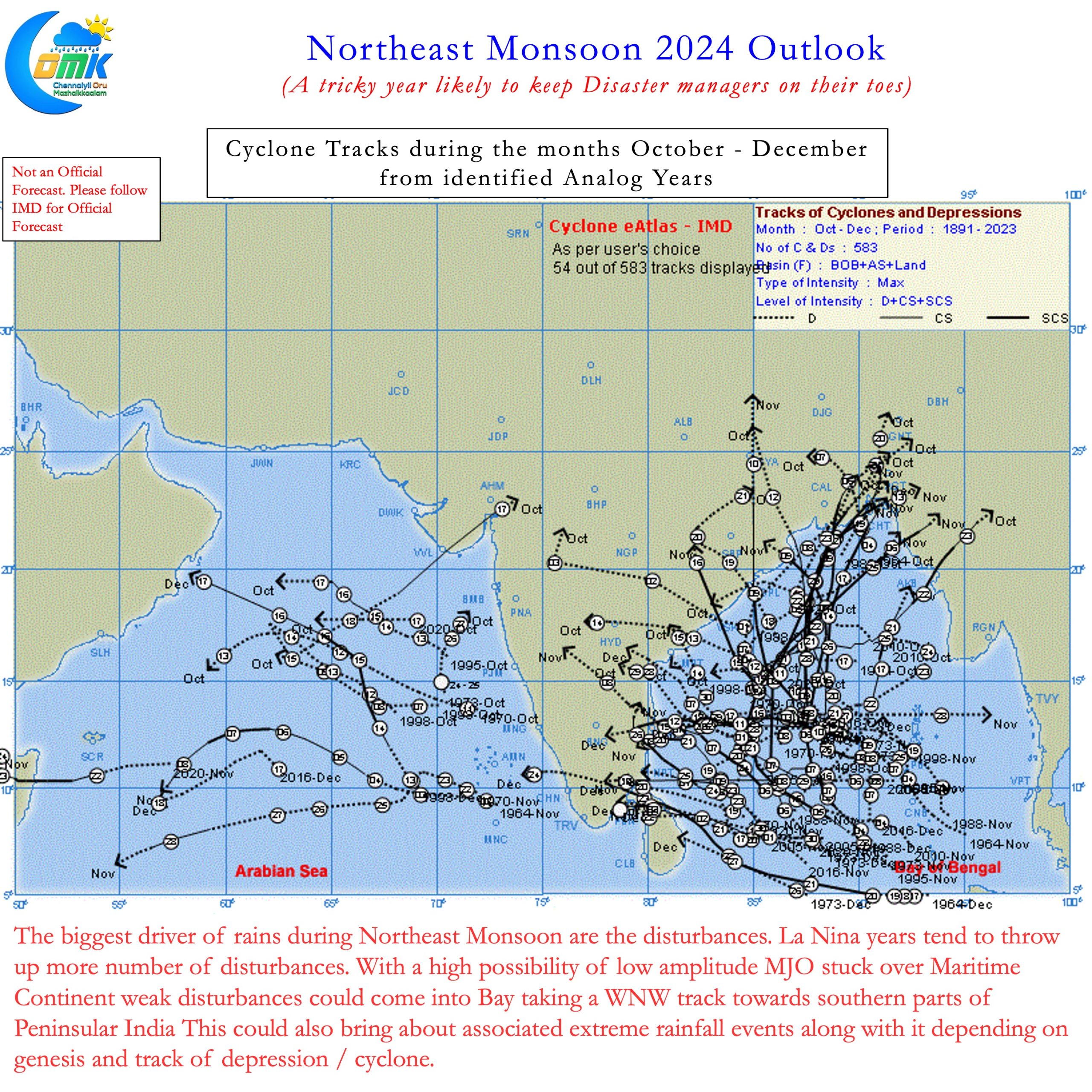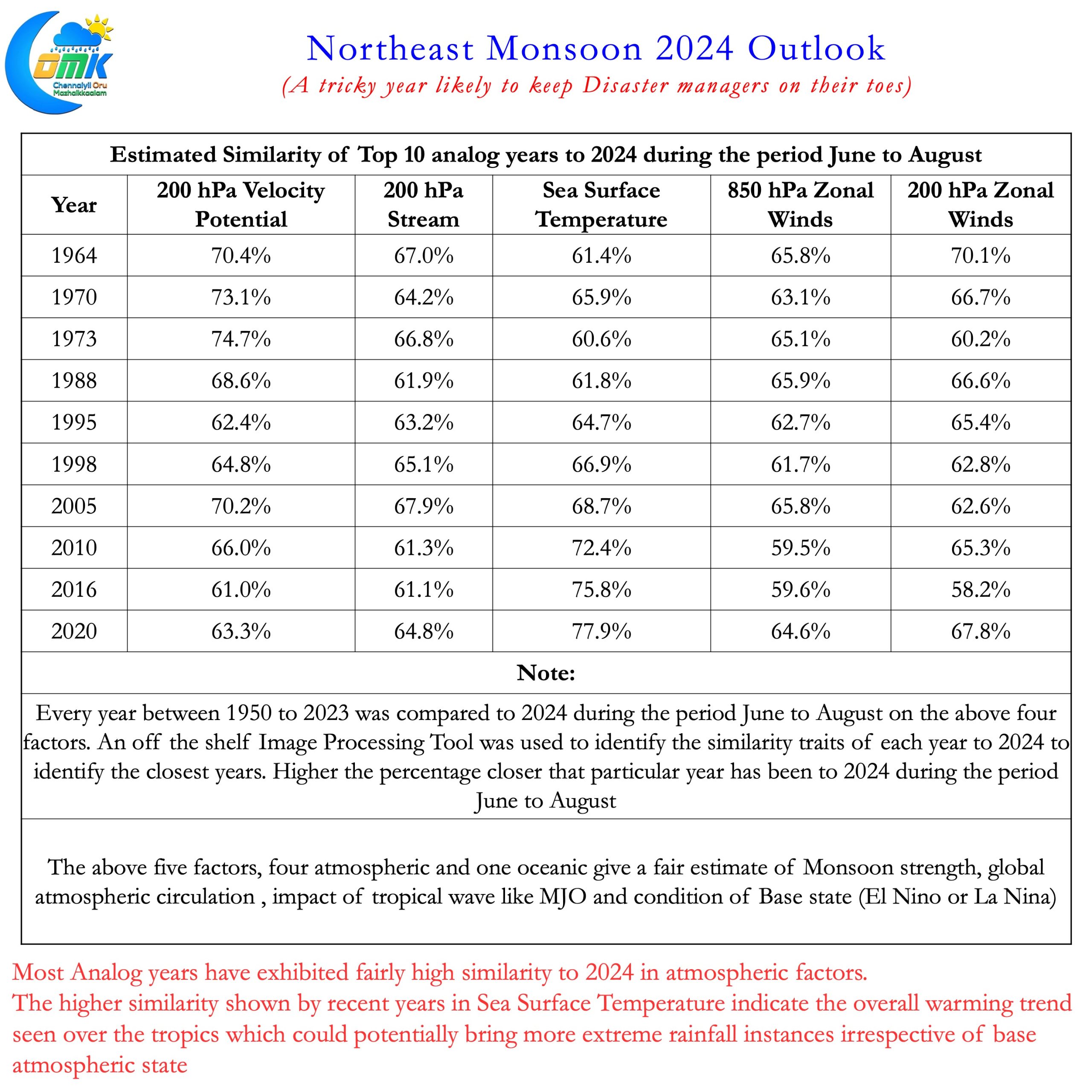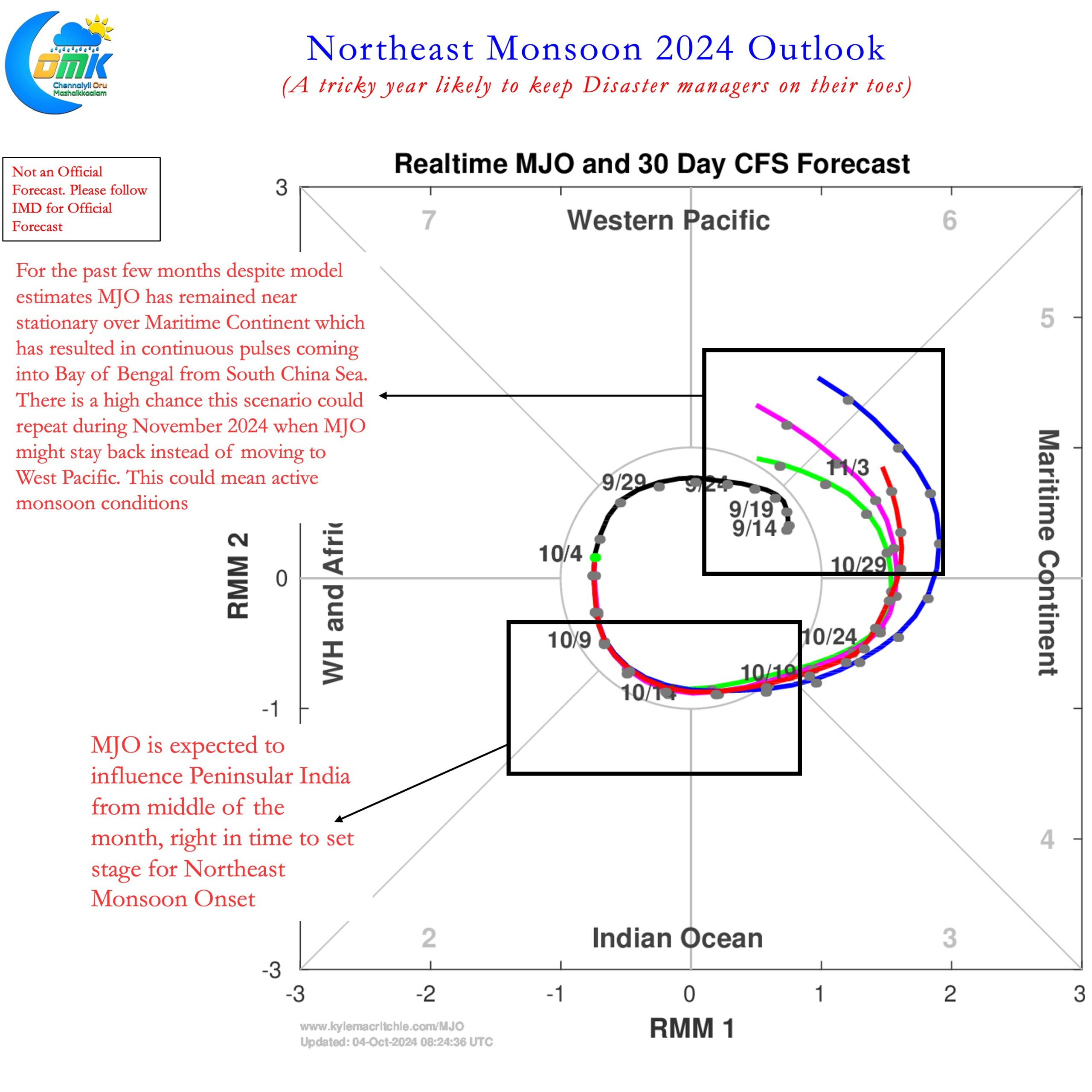They say Monsoon is a word and Northeast Monsoon is an emotion. As the seasonal winds get ready to change butterflies start to flutter in the stomach of weather bloggers from Chennai. Every day starts and ends with looking intently into models trying to identify minute changes. Changes that could potentially alter the dynamics of the season. As internet brought new tools / model forecasts closer to the weather bloggers the envelope has also started to expand. From analysing models to creating seasonal outlooks to understand how the season could turn out.
For the first time in 2016 a mid season inference was given as the season started on a weak note. 2017 was possibly the first year when a conscious attempt was to create a seasonal outlook. Following one of the poorest years there was a fair bit of anxiety which provided the trigger to create a formal outlook. Subsequently it has now become a practice to provide the yearly outlooks just before Northeast Monsoon starts. As each year passes by with experience one tends to learn new things as well. As the saying goes Learning is the only constant in life.
This year’s Northeast Monsoon Outlook is also a fresh attempt to unlearn and learn. An attempt to use new tools to eliminate human bias. As weather bloggers our bias is often stronger than trained meteorologists which could impact inferences. Weather bloggers more often than not are pluviophiles who make the journey through questioning. A journey that starts with “Will it Rain?” to identifying “Where would it Rain?” and “How much would it rain?”.
This year’s outlook uses a fresh approach unlike the past few years. The past few outlooks have been made using seasonal and sub seasonal weather forecasts. A blend of seasonal forecasts with human intuition developed over time. This year the outlook is based on trying to find analogs, years that are very similar to the current year. The practice of finding analogs is used extensively by meteorologists elsewhere in the Globe. In a way this approach is also statistical in nature trying to find answers to the future through history.







With the help of image processing tools all the years since 1950 has been compared with 2024 for the period June to August. Four atmospheric factors, Zonal winds at 850 and 200 hPa levels, Stream Function and Velocity Potential, were shortlisted for comparison. Similarly the sea surface temperature for June to August was included as one oceanic factor. Three factors, Pacific Base State (Nino / NIna), QBO (Quasi-Biennial Oscillation) and IOD were used to group the years. The individual years were then ranked within the groups based on the similarity / proximity to 2024 to create a set of analog years.
While the analog years are ranked from 1 to 10 it is essential to point out the ranks are used only as an indication. Keeping this in mind based on the analog years and the expected behaviour of MJO during Northeast Monsoon 2024 the following are the key take aways.
- With La Nina already influencing atmospherically and expected to strengthen during NEM 2024 there is a fair chance we could see a highly volatile Northeast monsoon season
- NEM 2024 may see above average number of disturbances (LPA / Depression / Cyclones) with a high chance for low amplitude MJO staying near stationary over Maritime continent during November
- There is a very high chance of more than one cyclone directly impacting Tamil Nadu coast during NEM 2024.
- There is increasing confidence NEM 2024 may see above average / excess rains for Tamil Nadu with monsoon interspersed by extreme rainfall events
- With a more WNW / NW track likely for disturbances (LPA / Depression / Cyclone) this year November and December could see more number of disturbances impacting Tamil Nadu while October could favour coastal Andhra Pradesh.
- WNW tracks could also mean one or two disturbances may move across Peninsular India leading to good rains for interior areas of Peninsular India as well
- With the arrival of MJO over Indian Ocean transition period (1st fortnight of October) could bring excess rains to interior areas of TN. Gradually from last week of October coastal areas may benefit from active Northeast Monsoon
Northeast Monsoon 2024 – A year that is likely to keep disaster managers on their toes

